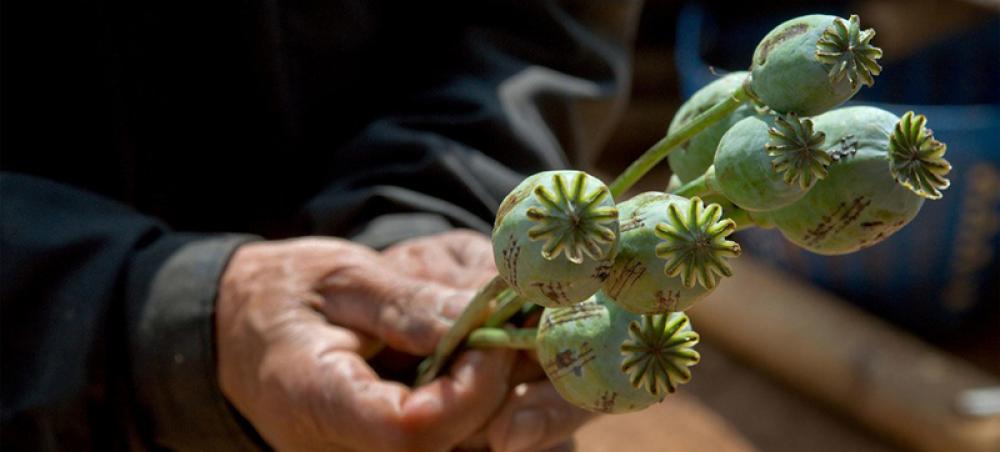Just Earth News | @justearthnews | 01 Nov 2022, 04:34 am Print
 Afghanistan Opium
Afghanistan Opium Image: Oneclearvision
New York: The 2022 opium crop in Afghanistan is the most profitable in years with cultivation up by nearly a third amid soaring prices, and despite the multiple humanitarian and economic crises facing the country and it’s Taliban rulers, said the UN Office on Drugs and Crime (UNODC) on Tuesday.
Opium cultivation in Afghanistan – latest findings and emerging threats, is the first report on the illicit opium trade since the Taliban’s return to power in August 2021.
The authorities banned all cultivation of opium poppy and all narcotics under strict new laws, in April 2022.
Opium is the essential ingredient for manufacturing the street drug heroin, and the class of medical prescription opioids which millions rely on for pain medication worldwide. Opioids have also been increasingly abused, causing widespread addiction issues in countries such as the United States.
This year’s harvest was largely exempted from the decree, said UNODC, and farmers in Afghanistan must now decide on planting opium poppy for next year amid continued uncertainty about how the Taliban will enforce the ban.
Sowing of the main 2023 opium crop must be done by early November this year.
Opiate limbo
“Afghan farmers are trapped in the illicit opiate economy, while seizure events around Afghanistan suggest that opiate trafficking continues unabated,” said UNODC Executive Director Ghada Waly, launching the new survey.
“The international community must work to address the acute needs of the Afghan people, and to step up responses to stop the criminal groups trafficking heroin and harming people in countries around the world.”
According to UNODC findings, cultivation of opium poppies in Afghanistan increased by 32 per cent over the previous year, to 233,000 hectares – making the 2022 crop the third largest area under cultivation since monitoring began.
Hub in Helmand
Cultivation continued to be concentrated in the southwestern parts of the country, which accounted for 73 per cent of the total area, and registering the largest crop increase.
In Helmand province, one-fifth of all arable land was dedicated to opium poppy cultivation.
Income triples
Opium prices have soared following the announcement of the cultivation ban in April. Income made by Afghan farmers from opium sales more than tripled, from $425 million in 2021 to $1.4 billion in 2022.
The new figure is equivalent to 29 per cent of the entire 2021 value of the agricultural sector. In 2021, the farm-gate value of opiates was only worth some nine per cent of the previous year’s agricultural output.
However, the increase in income did not necessarily translate into purchasing power, the UNDP survey notes, as inflation has soared during the same period, with the price of food increasing by 35 percent on average.
Yields down
Following a drought at the start of this year, opium yields declined from an average of 38.5 kilogrammes per hectare (kg/ha), in 2021, to an estimated 26.7 kg/ha this year, resulting in a harvest of 6,200 tons - 10 per cent smaller than in 2021.
The 2022 harvest can be converted into 350-380 tons of heroin of export quality, said UNDP, at 50-70 per cent purity.
Traffickers plough on
Seizure events collected by UNODC´s Drugs Monitoring Platform suggest that opiate trafficking from Afghanistan has been ongoing without interruption since August 2021. Afghan opiates supply some 80 per cent of all opiate users in the world.
- Why Apple suddenly wants millions of iPhone users to quit Chrome today
- Deadly decision on Grossglockner: Austrian man charged after girlfriend freezes to death
- Ray-Ban Meta (Gen 2) Launch in India: Check out specifications
- Apple Watch can now alert you about high blood pressure—Here’s what’s new in India
- Spanish tourist stabbed at Berlin Holocaust Memorial testifies in terror trial



-1763561110.jpg)


